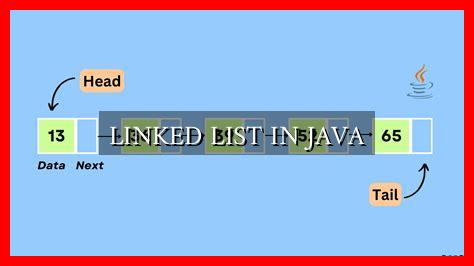-
Table of Contents
Understanding Linked List in Java
Linked lists are a fundamental data structure in computer science that are widely used in programming languages like Java. In this article, we will explore the concept of linked lists in Java, how they work, and their advantages over other data structures.
What is a Linked List?
A linked list is a linear data structure where elements are stored in nodes. Each node contains data and a reference (or link) to the next node in the sequence. Unlike arrays, linked lists do not have a fixed size and can dynamically grow or shrink as needed.
Types of Linked Lists
There are several types of linked lists, including:
- Singly Linked List: Each node has a reference to the next node in the sequence.
- Doubly Linked List: Each node has references to both the next and previous nodes.
- Circular Linked List: The last node points back to the first node, forming a circular structure.
Implementing Linked List in Java
In Java, linked lists can be implemented using the LinkedList class in the java.util package. Here is an example of how to create a singly linked list in Java:
“`java
import java.util.LinkedList;
public class Main {
public static void main(String[] args) {
LinkedList linkedList = new LinkedList();
linkedList.add(“Apple”);
linkedList.add(“Banana”);
linkedList.add(“Cherry”);
System.out.println(linkedList);
}
}
“`
Advantages of Linked Lists
Linked lists offer several advantages over arrays, including:
- Dynamic Size: Linked lists can grow or shrink dynamically without the need to resize the data structure.
- Efficient Insertion and Deletion: Inserting or deleting elements in a linked list is more efficient than in an array.
- Easy Implementation: Linked lists are relatively easy to implement and manipulate.
Use Cases of Linked Lists
Linked lists are commonly used in scenarios where frequent insertions and deletions are required, such as:
- Implementing a stack or queue data structure.
- Managing memory allocation in operating systems.
- Representing sparse matrices in mathematical computations.
Conclusion
Linked lists are a versatile data structure in Java that offer flexibility and efficiency in managing data.
. By understanding the concept of linked lists and their implementation in Java, developers can leverage this powerful data structure to solve a wide range of programming challenges.
For more information on linked lists in Java, you can refer to the official Java documentation.





